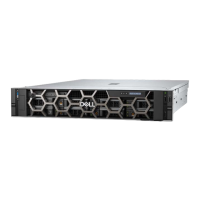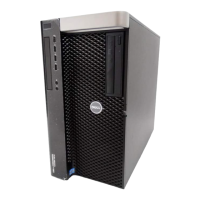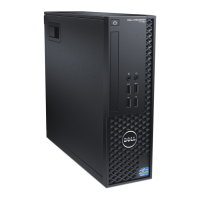One key factor in selecting the proper rails is identifying the type of rack in which they will be installed. Both the sliding rails and
the static rails support tool-less mounting in 19”wide, EIA-310-E-compliant square hole and unthreaded round hole 4-post racks.
Both also support tooled mounting in threaded hole 4-post racks, but only the static rails, as the more universal solution, support
mounting in 2-post (Telco) racks.
The table below shows the sliding and static rail configurations and supported racks:
Table 27. Sliding and Static Rails
Rail
identi
fier
Mounting
interface
Rail type Supported rack types
4-Post 2-Post
Square Round Thread Flush Center
B6 Ready Rails II Sliding √ √ √ X X
B4 Ready Rails Static √ √ √ √ √
NOTE: Screws are not included in either kit due to the fact that threaded racks are offered with a variety of thread
designations. Users must therefore provide their own screws when mounting the rails in threaded racks.
NOTE: Screw head diameter for the sliding rails must be 10 mm or less.
Other key factors governing proper rail selection include the following:
● Spacing between the front and rear mounting flanges of the rack
● Type and location of any equipment mounted in the back of the rack such as power distribution units (PDUs)
● Overall depth of the rack
The static rails offer a greater adjustability range and a smaller overall mounting footprint than the sliding rails. This is because
of their reduced complexity and lack of need for CMA support.
Table 28. Static Rails Adjustability
Rail
Identifier
Rail Type Rail Adjustable Range (mm) Rail Depth (mm)
Square Round Threaded without
CMA
with CMA
Min Max Min Max Min Max
B6 Sliding 676 868 662 861 676 883 714 845
B4 Static 608 879 594 872 604 890 622 N/A
Note that the adjustment range of the rails is a function of the type of rack in which they are being mounted. The Min/Max
values listed above represent the allowable distance between the front and rear mounting flanges in the rack. Rail depth without
90
Disassembly and reassembly

